Meeting Volvo’s VNL
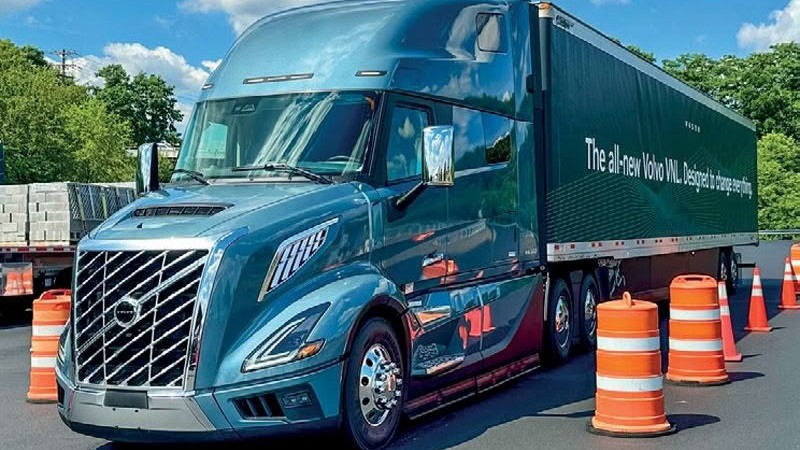
Volvo is dragging the US trucking industry into the 21st century with the launch of North America’s most fuel-efficient, safest and best-connected truck. In fact, the new Class 8 VNL is so advanced, the manufacturer reckons it has the potential to save operators at least US$20,000 (NZ$31,000) per truck per annum when compared with the competition or the legacy model it replaces. So how has it done this?
Well, for starters, it has thrown US$400 million (NZ$635 million) at the project. This includes a new production facility at its New River Valley plant in Dublin, Virginia, which we visited to find out more about the new truck. It has also learned a lot from its super-slippery SuperTruck 2 concept truck. But, arguably, the most significant features of this new long-haul tractor are all borrowed from Volvo’s European truck range.
Smooth running
Aerodynamics clearly play a crucial role in the VNL’s design. The bonnet is narrower, and the bonded, curved windshield, resembling that of a high- speed train, is raked at 52 degrees compared with its predecessor’s nearly vertical angle. Voids have been filled, turbulent areas smoothed, and chassis fairings now reduce the gap between truck and trailer. Volvo’s Camera Monitoring System (CMS), launched in Europe at the beginning of the year, is an option on the VNL. However, due to United States regulations, trucks with cameras and screens still require mirrors, albeit smaller than before, which stunts the full aerodynamic benefit of these systems.
The new VNL features a notably larger grille than before, which, along with the new hood scoops, enhances cooling, reducing the workload on the fan, thereby improving fuel efficiency. “A penny saved is a dollar earned,” says a spokesperson, highlighting the numerous small aerodynamic improvements around the cab, collectively contributing to a 7% improvement in fuel economy.
It is worth noting that any aerodynamic improvements count for more in the US than they do in Europe, simply because of the speeds trucks are permitted to drive. In some states, 85mph (136km/h) is allowed.
However, it’s a different story with weights, with federal law forbidding anything over 36.3 tonnes. Perhaps this explains why Volvo is in no rush to offer its new 17L engine Stateside. Instead, the new VNL is equipped with the FH’s D13 engine, in regular and turbo compound guises, with power ratings ranging from 302kW (405hp) to 373kW (500hp). Recent efficiency improvements to this 13L engine, along with a faster-shifting I-Shift transmission, contribute an additional 3% in fuel efficiency gains. Combined with the aerodynamic cab design, this 10% improvement equates to claimed fuel savings of US$5466 (NZ$8700), based on 192,000km per year, over the outgoing model. “The new VNL is the most fuel-efficient production truck bar none”, declares Magnus Koeck, vice president, marketing and brand management, Volvo Trucks North America.
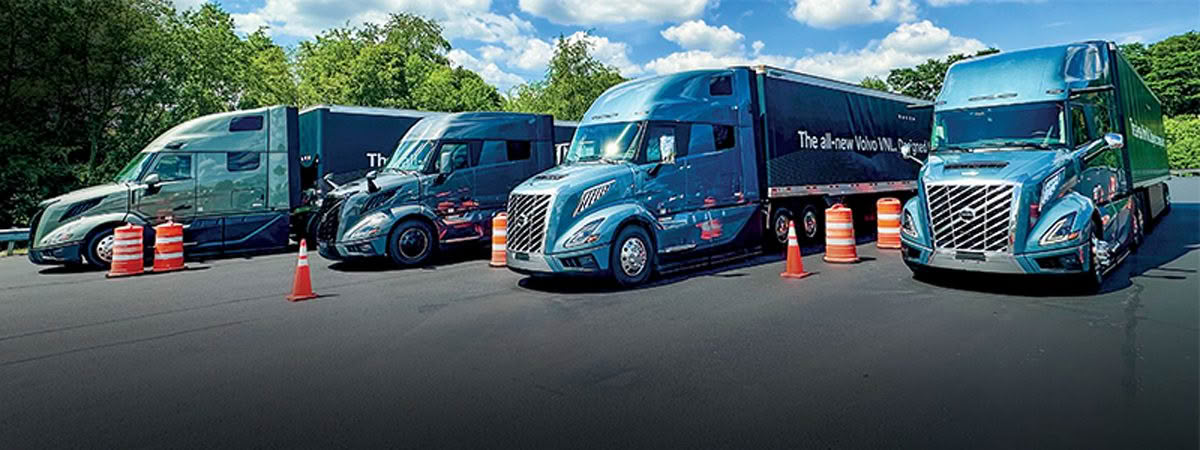
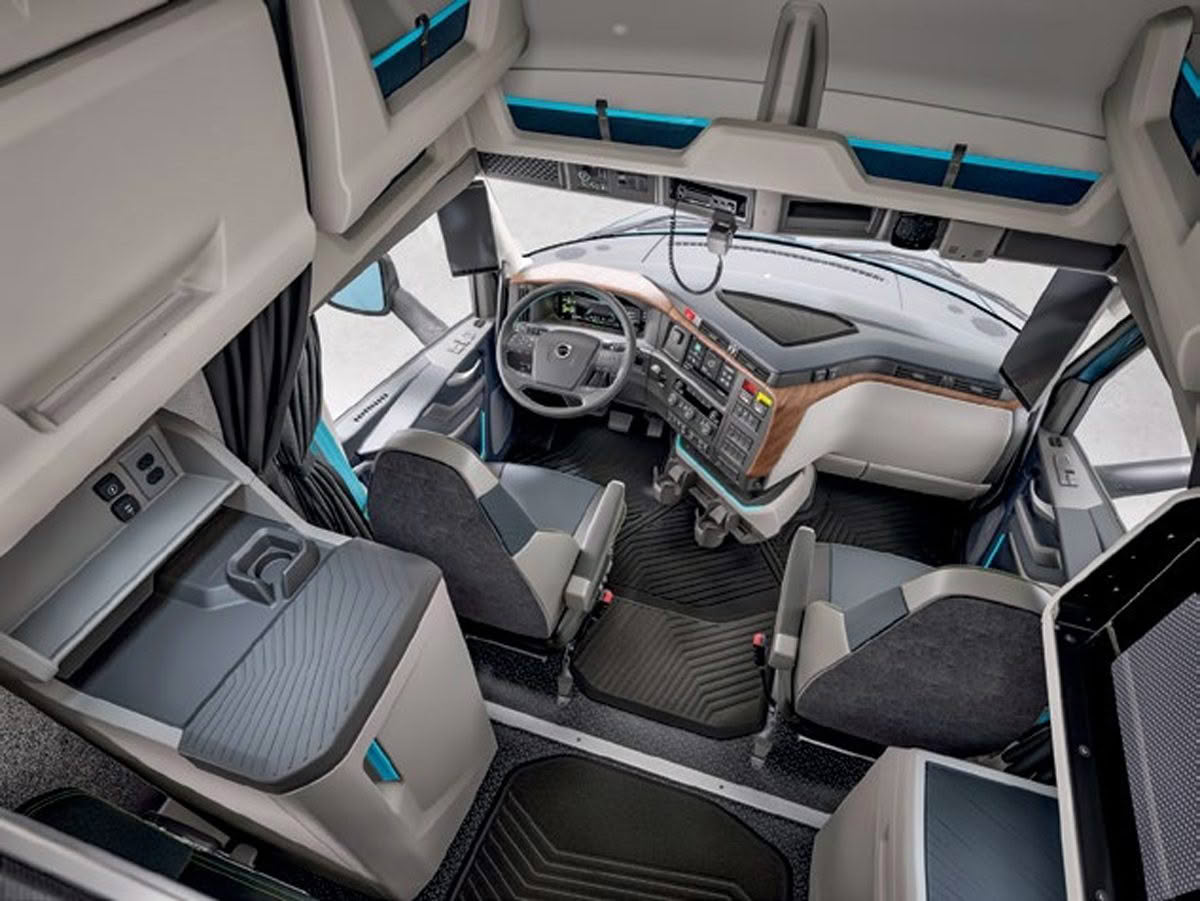
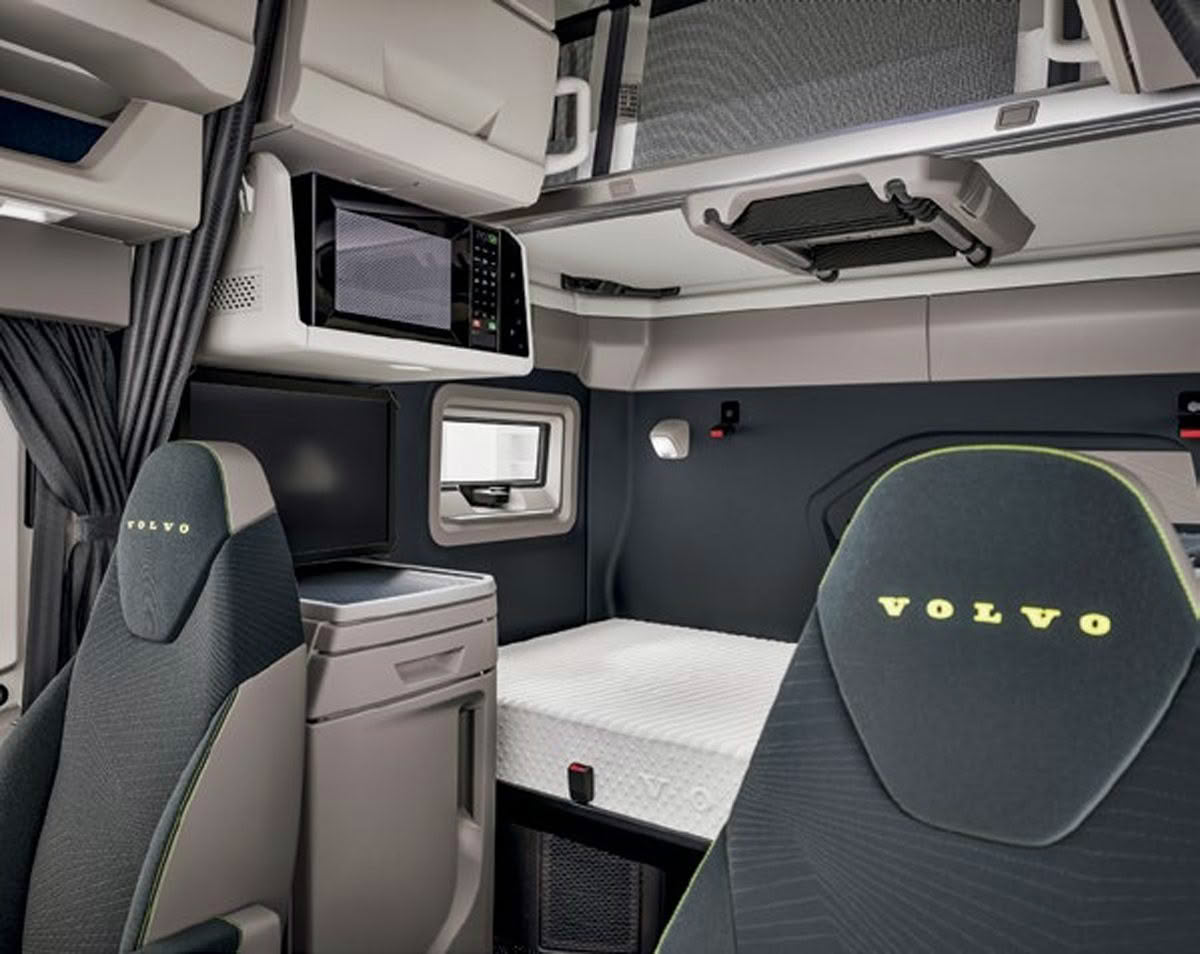
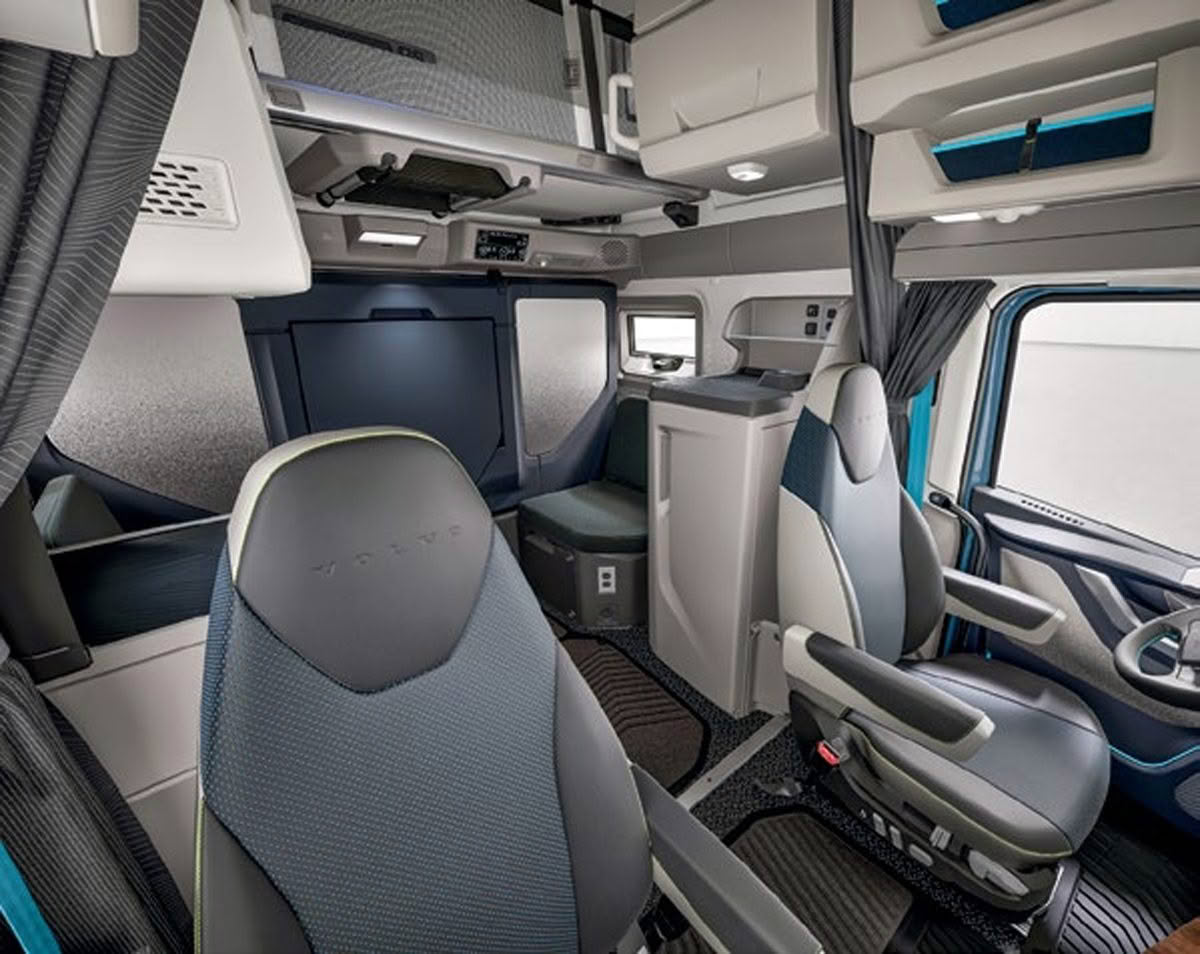
Cabs can be just about as big as you like – as expected from a US-spec conventional.
You’re in safe hands
The European FH’s influence on the new VNL is most evident in its active and passive safety features. In its quest for zero accidents, Volvo has introduced many of these European safety aids, mandated and non-mandated, to the VNL. The extensive list includes active driver assist plus with pilot assist, pedestrian detection, adaptive cruise control with stop-and-go, road sign detection, intelligent lighting and electronic parking and trailer brakes. Additionally, Volvo has introduced E-Call, an innovative safety feature that connects the driver to emergency services where a phone service is available, providing precise location details automatically in the event of a rollover crash or airbag deployment.
Volvo has bundled many of these safety aids into several different packages and encourages customers to opt for them. It has calculated that for every 1,600,000km travelled, the average American truck will have 1.9 accidents, with the average crash costing US$148,000 (NZ$235,000) or US$10.8 million (NZ$17.15 million) if there’s a fatality. Investing in optional safety features that mitigate these accidents makes a lot of financial sense.
We had the opportunity to experience some of these safety aids firsthand, albeit through a virtual reality headset, and we saw a successfully crash-tested new VNL cab up close.
Driver retention
On average, it costs US$9748 (NZ$15,478) to recruit a new driver, but US hauliers won’t need to worry about that if they operate a fleet of VNLs, according to Volvo. “Bosses say we want butts on seats, but drivers say they want comfortable seats for their butts,” says a spokesperson, emphasising the VNL’s comfort.
However, we reckon it might depend on what size cab and trim spec the operator chooses.
There are six models available, from the VNL 300 day cab to the luxurious VNL 860 with its palatial 72in full-height sleeper. Each model offers four interior and exterior trim packages.
The VNL is also the first North American truck with 24V electrical architecture.
Onto a winner
Volvo Trucks North America asserts that the new VNL rivals the European FH Aero, and having experienced it firsthand, there’s a strong case to be made that the VNL might indeed surpass the FH. Thanks to its hood, it is notably safer and more aerodynamic, and from a driver’s living space perspective, it stands head and shoulders above anything in Volvo’s European lineup. It’s clear why Volvo believes the VNL is the best truck on the US market and is confident that its share of the class 8 market is about to increase from its current 11%.
According to Koeck, if all 300,000 class 8 trucks sold in the US every year matched the new VNL’s fuel efficiency, it would result in carbon reductions equivalent to those of 30,000 battery-electric class 8 trucks. That’s a startling figure.
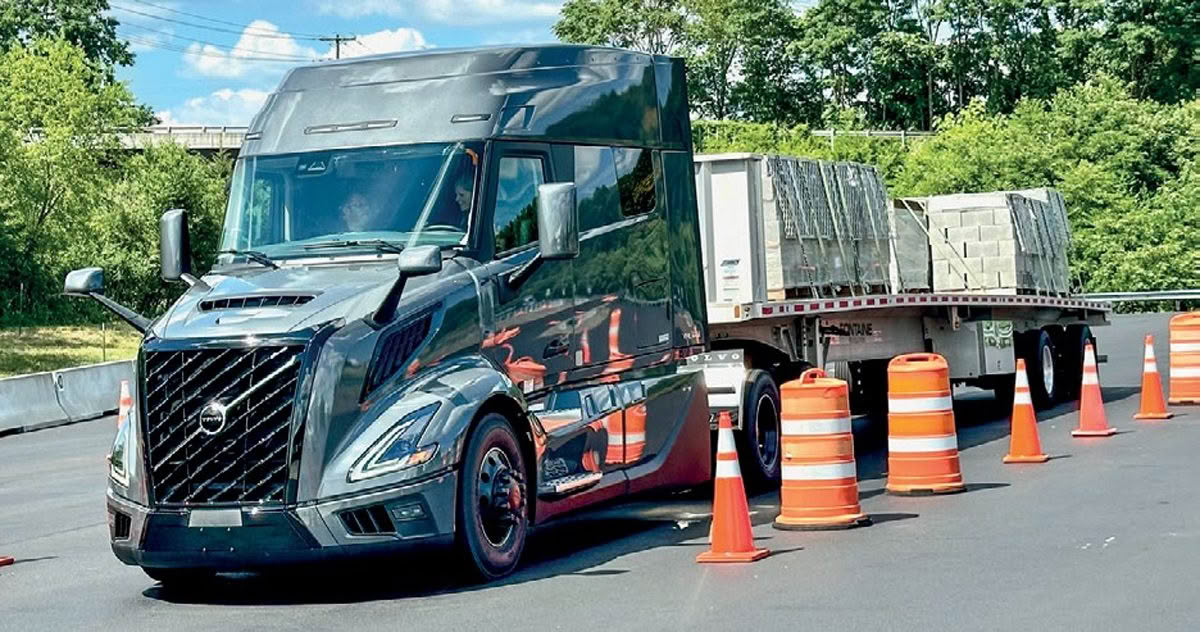
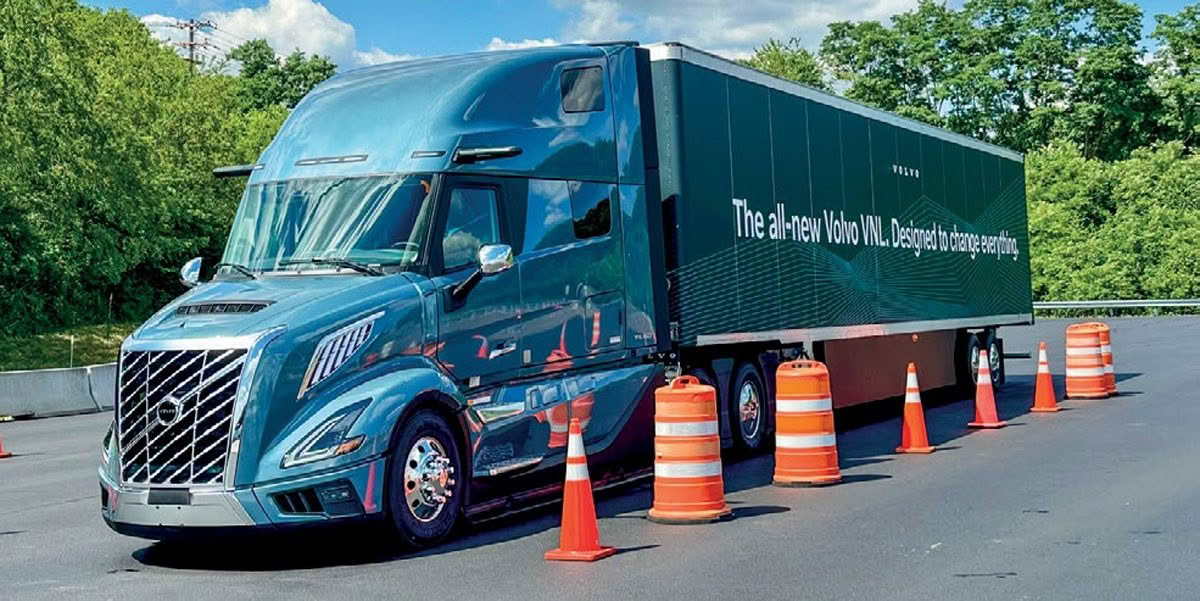
Behind the wheel
First up in our brief drive at Volvo Truck North America’s demo centre test track is a 660, which features a medium-length (62in), full-height sleeper cab. It is finished in entry-level fleet spec, which means cloth seats, rubber steering wheel and a dearth of soft plastics. That said, it certainly isn’t an unpleasant place to be, and the living area dimensions would put a smile on any European tramper’s face.
It does have some extras, though, like CMS. We really like Volvo’s mirror replacement system, although note that in this truck, the screen is very close to the driver on account of the curved windscreen and location of the A-pillar.
One feature this truck does have that’s yet to be introduced in Europe is a key fob and a push-button start. I fire up the 302kW (405hp) D13, put the foot on the brake pedal, select ‘D’ on the steering column-mounted stalk, and watch as red lights on the electronic parking brake and trailer brake extinguish.
Visibility, driving around the track, is superior compared with every other bonneted truck I have ever driven. You can’t even see the hood, so there’s no chance of losing sight of cars on the near side. There’s a lot of glass, too, thanks to that deep, curved windscreen. I’m impressed that the designers managed to get windscreen wipers to work effectively on its curvature. It must have been a headache.
We are running at 34.5 tonnes, and the engine works hard on some of the hills. The D13 is considerably louder than in the FH, which is odd considering that we’re sitting further away from it. The truck is equipped with VOAS air suspension, which does a reasonable job of ironing out the bumps.
Every so often, the truck bleeps, alerting us to road signs. If it detects a speed limit sign and realises that we’re travelling under or over that speed by plus or minus 10mph (16km/h), it gives a triple bleep to alert us to our error. When we come to a stop, the demo driver in the passenger seat tells me to take off the orange seatbelt while leaving the truck in gear. Doing so, it automatically selects ‘park’ and applies the electronic handbrake and trailer brake.
The second vehicle is the flagship 860 Ultimate, which is undoubtedly one of the best trucks I have ever been in. In fact, I spend the first 10 minutes simply enjoying the living space provided by the 72in full-height sleeper cab, folding the giant bunk against the rear wall, and setting up the table and chairs. I have stayed in hotel rooms with less space than this.
The view from the driver’s seat is pleasant, too, with wood grain accents and a large central touchscreen. Like in all VNLs, the dashboard display is digital, borrowed from the FH.
This one has the 373kW (500hp) engine, which makes light work of the small inclines on the test track. It’s noticeably quieter than the previous truck, too, but nobody can explain why. Presumably, this cab has better insulation.
Something else that’s immediately apparent is the superior ride quality. It is fitted with the new GRAS (global rear air suspension), which features eight airbags, and is far superior and less aggressive on rough surfaces than VOAS. It feels so well planted, with none of the floating/wallowing feeling that Europeans have become accustomed to with our cabovers.
This truck is fitted with CMS, too, and after a couple of laps, I’m fully used to it. Although the small mirrors that accompany it are far less obtrusive than the massive West Coast mirrors that most US trucks have, they’re still surplus to requirements, and the sooner Volvo convinces the Department of Transportation that they’re no longer needed, the better.







